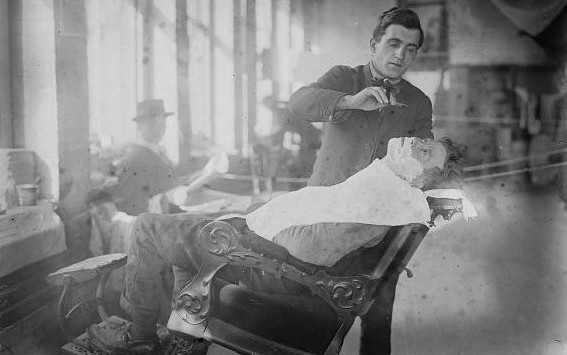INSIDE SUMNER ARMORY – BASEBALL! (1895)
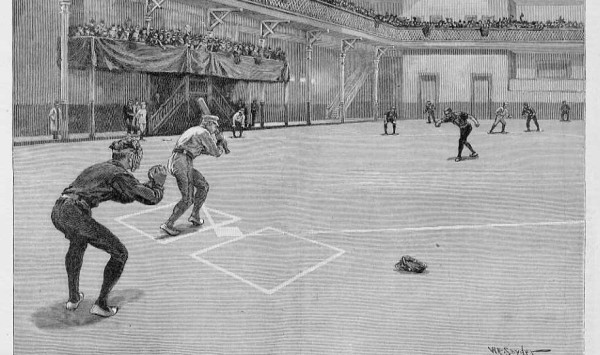
******************************************************************************************************************************** Brownstone Detectives investigates the history of our clients’ homes. The story you are about to read was composed from research conducted in the course of one of those investigations. Do you know the history of YOUR house? ******************************************************************************************************************************** Back in the day, in addition to drilling the troops, our national guard reserve units used to utilize our armories the way we all hope they’ll be used again one day – for exercise and fitness. Here at the 13th Regiment Armory (formerly known as the Sumner Armory on Sumner Avenue [now known as Marcus Garvey Boulevard] between Jefferson and Putnam Avenues), a number of the men chose up sides and played a game of baseball – inside. By the mid 1870s, “baseball already was popular in most big eastern cities and remained so throughout the nineteenth century,” noted “The Great Encyclopedia of Nineteenth-Century Major League Baseball” By David Nemec. “The ball was softer, the fielders never wore gloves, the bases were closer together and sliding was taboo–otherwise spectators saw much the same display of skills they did during the outdoor season.” Views of the armory (which was built in 1891, according to Save Bedford-Stuyvesant, in order to replace an armory in Flatbush) from the outside are all too easy to come by. But shots like these (drawings, rather), depicting the layout of the structure from the inside, appear much less often. Originally, according to the New York Times, “(i)nside the headhouse, the administrative section at the front of the armory, […]
TRAILING A BROOKLYN SNEAK THIEF (1885)
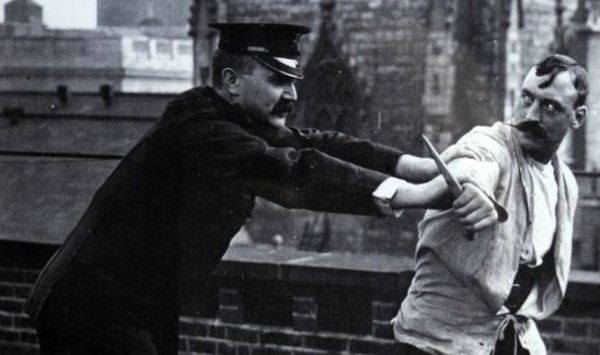
******************************************************************************************************************************** Brownstone Detectives investigates the history of our clients’ homes. The story you are about to read was composed from research conducted in the course of one of those investigations. Do you know the history of YOUR house? ******************************************************************************************************************************** (From The Brooklyn Daily Union of Thursday, 25 June 1885.) “Two Jimmies and a Lot of Skeleton Keys and Lock Picks in His Possession – After Surveying the Residence of the Superintendent of Police He Goes Elsewhere and is Caught at Work. ” A few days ago a sneak thief, who got into a house in Hart street, was seen by a woman living on the opposite side of the street when he was leaving. She furnished Captain McLaughlin with a description of the man, which was subsequently given to Detectives Kelly and Druhan, of the Gates avenue station. Yesterday afternoon Kelly and Druhan left the station together and on looking up the street, not 200 feet away, saw a man who answered the description in every particular. The man was near Marcy avenue, and the detectives got out of the way until he passed them, and then followed in his footsteps. He went up Madison street, then to Tompkins avenue, Putnam avenue and finally to Bedford. The detectives by jumping on cars and running in and out of stores had become separated, but Kelly kept the man in sight, and did not let him get far away from him. The man went up Bedford avenue, out of the Ninth and […]
EXHUMING THE GARDENER OF BED-STUY (1914)
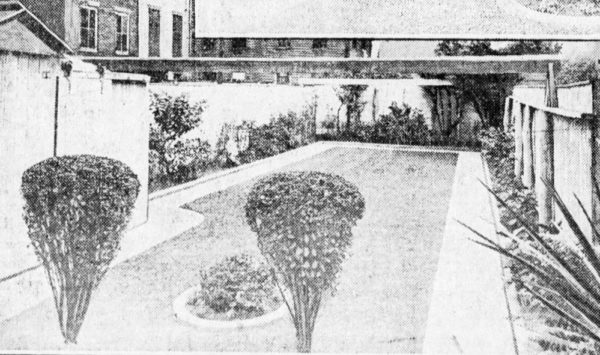
******************************************************************************************************************************** Brownstone Detectives investigates the history of our clients’ homes. The story you are about to read was composed from research conducted in the course of one of those investigations. Do you know the history of YOUR house? ******************************************************************************************************************************** “All stories, if continued far enough, end in death, and he is no true-story teller who would keep that from you.” — ERNEST HEMINGWAY, Death in the Afternoon The dead are everywhere amongst us. When we think of the past, we ponder the lives of those poor souls who once lived, breathed air, told tales, worked, and dreamed dreams. They can no longer tell tales, as the saying goes, but those resourceful ones amongst us can often piece together their forgotten stories and, with them, weave the colorful and ornate narratives of their lives. When we start researching a house and its former occupants, we never know what we’re going to find. Sometimes we unearth a truly bountiful draw – pictures of owners, documentation on the building, and the stories about what had happened at that house – they seem to start popping up all over the place. With other houses, though, it can seem as if the place had never been occupied. But we always find something. No matter how small. And these are the clues that become our figurative footprints. We’re detectives, you know. 😉 THE GARDENER OF 1155 BEDFORD AVENUE When we began snooping around 1155 Bedford Avenue, on the trail of a particular Charles Morse, we found […]
THE GREENEST BLOCK IN BROOKLYN (1902)
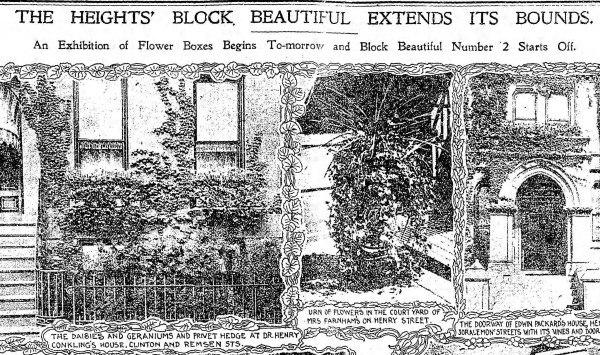
******************************************************************************************************************************** Brownstone Detectives investigates the history of our clients’ homes. The story you are about to read was composed from research conducted in the course of one of those investigations. Do you know the history of YOUR house? ******************************************************************************************************************************** As the judging for this year’s “Greenest Block in Brooklyn” award heads into its final round, we bring you a history of the concept of beautifying and greening neighborhoods in the borough of Brooklyn. A BRIEF HISTORY OF BLOCK BEAUTIFICATION IN BROOKLYN Before the Botanic Garden arrived on the scene with its “Greenest Block in Brooklyn” initiative in the 1990s, there was “Block Beautiful.” A number of private Brooklyn citizens, wishing to bring about the greening of their neighborhood, initiated an organized effort to stimulate an active interest in its residents utilizing their green thumbs to good effect. This earliest organized “block beautification” project began somewhat simultaneously in 1902 on two separate streets and section of the borough – Henry Street (in Brooklyn Heights) and on Quincy Street (in the Bedford Section). Led by Miss Zella Milhau of 291 Henry Street, the effort was called “Block Beautiful,” and was an initiative to “green” the block upon which she and her family lived, with the hope that this effort would be replicated throughout the city. Milhau, an artist and active member of the Municipal Art Society and the Fine Arts Club of Manhattan, who lived in the Columbia Heights section on Henry Street between Joralemon and State streets, originated the idea and got […]
